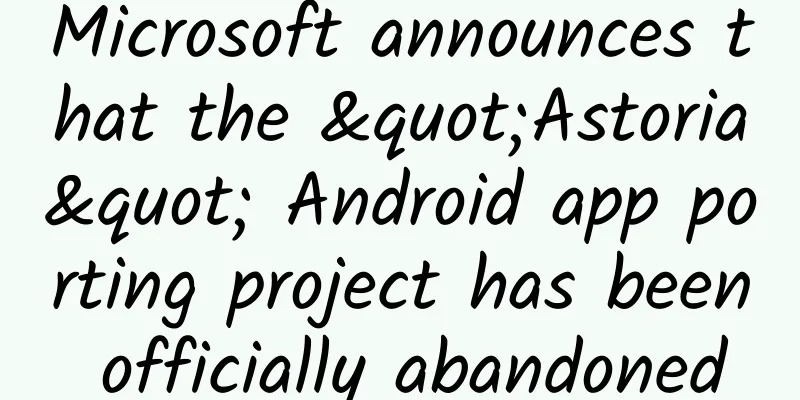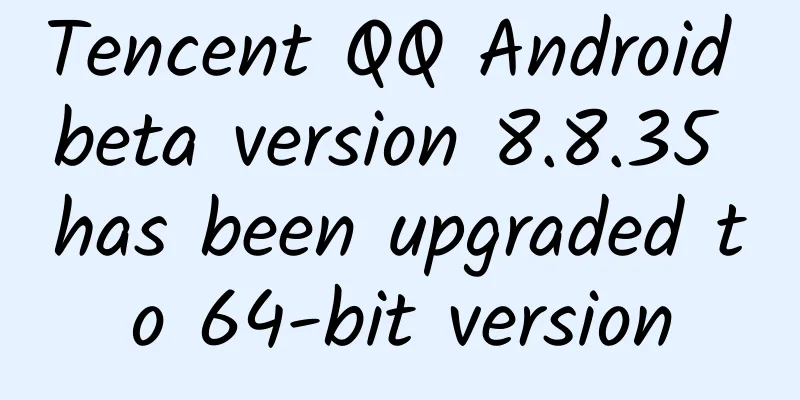Microsoft announces that the "Astoria" Android app porting project has been officially abandoned

|
After months of speculation, Microsoft has finally officially announced the death of the Astoria app porting project. At last year's developer conference (Build 2015), Microsoft announced four porting projects, namely - 1) Project Islandwood, which allows developers to port the Objective-C code of iOS applications to Windows Universal Platform (UWP) applications; 2) Project Centennial, which is for porting Win32 applications; 3) Project Westminster, which is for porting Web applications; and 4) Project Astoria, which is for porting Android applications. Then, something strange happened. When Microsoft released Windows 10 Mobile 10549, it was missing the Android subsystem from the previous compilation. Suddenly, the entire forum was silent, and people speculated that Project Astoria was about to be declared dead. Although Microsoft is still promoting the iOS bridge (Project Islandwood), it has not commented on Astoria. The two bridge projects have similar ideas, but work in completely different ways. Project Islandwood allows developers to easily compile existing Objective-C code into a UWP app with minimal changes, while Astoria can handle Android APKs in a similar way. When Microsoft brought the Android subsystem to Windows 10 Mobile, users quickly found themselves able to download and install an APK file on supported Windows Phone devices. Here is Microsoft's official statement on abandoning Project Astoria:
As we mentioned before, Microsoft did acquire Xamarin for an undisclosed amount. Xamarin allows developers to create a common code based on C# and create Android, iOS, and Windows apps. As for the other three transplant projects outside of Astoria—Project Islandwood, Westminster, and Centennial—they are all still alive and well. |
<<: You have acquired countless skills, but why have you achieved nothing?
>>: How to reasonably create bugs in iOS development
Recommend
[Collection] A complete collection of essential tools for ASO optimization, some ASO optimization and analysis tools worth recommending!
1. ASO 100: http://aso100.com/ Competitive ASO co...
Astronauts are not allowed to fart. How can they do this?
The environment in space is completely different ...
Qiu Yuan-Victoria's Secret Body Shaping Private Lesson Video
The quality of the recorded video cannot be compa...
How to attract traffic to your Douyin store through reviews?
For Douyin stores , if you want to do a good job ...
Guide to the implementation of medical beauty operation plans!
1. Introduction Many operators of medical beauty ...
Why does hair loss become more severe the more you exercise?
I saw a statement online that "some people l...
App operation: How to formulate a message push strategy?
Whether it’s transactional or interactive messagi...
What are the differences between CT, MRI and B-ultrasound? How do they work? Learn more after reading this
Simply put, CT, MRI, and B-ultrasound are all dev...
If you mistakenly download these ten apps, your phone may be deeply infected with viruses. Here are five warning signs:
Smartphones have become a necessary communication...
BYD's "1.5T China's King of Machines" has not only reached the top of technology, but also stepped on the accelerator for the industry.
At the Chengdu Auto Show, BYD made a splash with ...
Approaching the "Pearl of the Great Wall" - Wuliangsu Lake
"Pearls are scattered on the bank of the Yel...
Dating Multiplication Technique online reading book, Dating Multiplication Technique pdf Baidu network disk download
Dating Multiplication Technique online reading bo...
How do popular products come about? Ideas for selecting products for second-category e-commerce advertising!
You place orders as aggressively as a tiger, but ...
I accidentally ate this fruit and my mouth swelled up like a sausage!
Review expert: Shi Jun, Ph.D. in botany, well-kno...
Sweet autumn starts with chestnuts, and this "hybrid" is the most unique way to enjoy chestnuts!
Author: Fluent What is the strongest smell on the...









